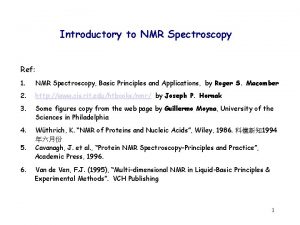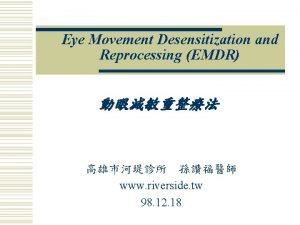Nuclear Magnetic Resonance and Nuclear Waste Reprocessing Geoffrey

- Slides: 1

Nuclear Magnetic Resonance and Nuclear Waste Reprocessing. Geoffrey Vidick, Nouri Bouslimani and Jean F. Desreux Coordination and Radiochemistry, Dept. of Chemistry, University of Liège, Introduction General. TBP The management of nuclear wastes remains a major problem for future generations, particularly the storage of highly radiotoxic wastes. The minor actinides [MA] are the main contributors of the long term radiotoxicity. The transmutation of MA leads to an important decrease in waste radiotoxicity but requires the separation of MA from the lanthanides [Ln] that are neutrophages. The partitioning of MA from Ln is particularly difficult because of trivalent Ln and actinides [Ac] have very similar properties. In recent decades, a family of bis-triazine ligands were found to be remarkably selective extracting agents for the MA/Ln separation. [1]However, their effectiveness decreases on going from a central pyridine ring (BTP) to a bipyridine (BTBP) and finally to a terpyridine unit (BTTP. ( Calixarenes HNO 3 media BTBP We use several advanced NMR techniques in order to fully characterize Ac ions and their complexes. Stratégy for the Nuclear Fuel Cycle in th 21 st Century. First approach : use of relaxivity The dispersion of the longitudinal relaxation time T 1 of the solvent nuclei with the magnetic field (NMRD) yields information on the magnetic properties and on the dynamic behavior of paramagnetic species. The relaxation rates 1/T 1, 2 (or relaxivites) depend on (1) the solvation state, (2) the rotational correlation time τr, (3) the electronic relaxation τsi and (4) the solvent exchange time τm. NMRD titrations are very useful for the determination of thestoechiometry of complexes. The relaxivity decreases when a ligand is added from paramagnetic centers until a plateau is reached when the complex is fully formed. As illustrated in the figure in right, the BTP ligand form a triscomplexe, the BTBP ligand a more solvated bis-complex and only a soluble 1: 1 complex can is formed with BTTP ligand in nitric acid media. Second approach: NMR spectroscopy of paramagnetic compounds The chemical shifts induced by paramagnetic ions depend on (1) the dipolar interaction between the nuclear spins and the unpaired electronic spins and/or (2) the contact contribution due to electronic spin densities delocalized into the ligand orbitals and thus on the partial covalency of the coordination bonds. The dipolar shift isa through space interaction between the magnetic moment of the paramagnetic metal ion of the nucleus. The NMR spectra of complexes ofligands with dipolar Yb 3+ ions, we can deduce solution structure from a geometrical model. Rigid cyclohexenyl groups BTP forms highly compact and symmetric tris-complexes. These very crowded and stable structures are highly hydrophobic units which are very well extracted. Eu 3+ Cl. O 4 - salt Only poorly extractible 1: 1 species is formed in nitrate media with BTTP due to the competition between ntritate ions and BTTP ligand to metalic ions center. BTBP form less crowded, partially solvated, bis-complexes with enough room for a nitrate ion is able to penetrate the coordination sphere and to deform the structure. NO 3 - Np. O 2+ and Pu. O 22+ and their complexes Well-resolved 1 H NMR spectra can be for obtained for Np. O 2+ and Pu. O 22+ complexes despite relatively high electronic relaxation times. The paramagnetic shifts induced by Np. O 2+ in the NMR spectrum of BTBP in anhydrous CD 3 CN are again essentially of dipolar origin even though aromatic systems are prone to favor electronic spins delocalization. There is an excellent correlation between the calculated and the experimental shifts. Hpara z “CH 3” Hortho Hmeta x “CH 3” Conclusions NMR is a hardly broached research field in actinide science. We showed that well resolved NMR spectra of actinides complexes can be obtained. NMR and relaxivity are useful techniques to determine the stoechiometry of complexes and to obtain information about solvation state. The dipolar paramagnetic shift is a powerful method allowing to find the solution structure and conformation of Ln and Ac complexes. These informations about the properties of complexes in solutions are helps to more understand the properties of selective extracting agent for the Ac/ Ln separations. Acknowledgements The authors thank Prof. M. J. Hudson and L. M. Harwood, Dr. R. St. J. Foreman and F. Lewis, University of Reading, U. K. , for a gift of BTP, BTBP and BTTPligands. Financial support from the Institut Interuniversitaire des Sciences Nucléaires of Belgium (IISN), the European Integrated Project EUROPART (FP 6) and the ACTINET research network are gratefully acknowledged.

